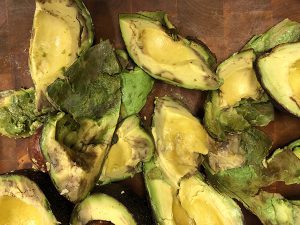My local retailer, San Antonio-based H-E-B, has been offering a house brand of so-called ugly produce under the Inner Beauties label for a while, and now they’re piloting a markdown program under the same name.
The idea has merit.
Many retailers are looking for the right way to implement food waste reduction efforts, including offering second quality produce items, to see what fits with their shoppers. When the price is right, I snap up Inner Beauties citrus and apples.
The markdown table at the Berkeley Bowl in Berkeley, CA, is a riot of amazing deals that usually has a nice crowd of deal-seekers. Even Kroger offers produce that’s still got some life left, but maybe not full price worth that I’ve watch consumers peruse on their shopping trips.
Another regional powerhouse – West Des Moines, IA-based Hy-Vee — is piloting a new app called Flashfood that helps consumers find nearly out-of-date items to snag a deal. From what I’ve seen, this technology only works with UPC-coded items, and must be managed by store employees.
But this new offering I ran across at an H-E-B store in Leander, TX, has me wondering how far these programs should go.
Listen, I’m all for markdowns. I’m a bargain hunter by nature. But I’m just not sure mark down avocados are a great idea.
There were several bags of avocados littered among the full price fruit, a sad assortment of pitted, bruised and damaged specimen that very few people would choose. The in-house guacamole maker would probably toss these things.


I picked up two bags, which are marked 50% off, to see what was inside.
The problem is that choosing an avocado is a very tactile process – I’d argue it’s even more tactile than thumping a watermelon. Having these marked-down fruits sequestered in a sweaty, condensation-filled plastic bag is a major turnoff.
Once I got through the lot, my suspicions were confirmed. I can’t see that even the thriftiest consumer would find 50% worth of value out of this process.
I think, if I was enterprising, I’d find 50% usable fruit – maybe. I was honestly surprised at how decent the condition was – for the color, at least. Most of the flesh inside the skins was mush, and a few of them had an old, fermented smell to them.


